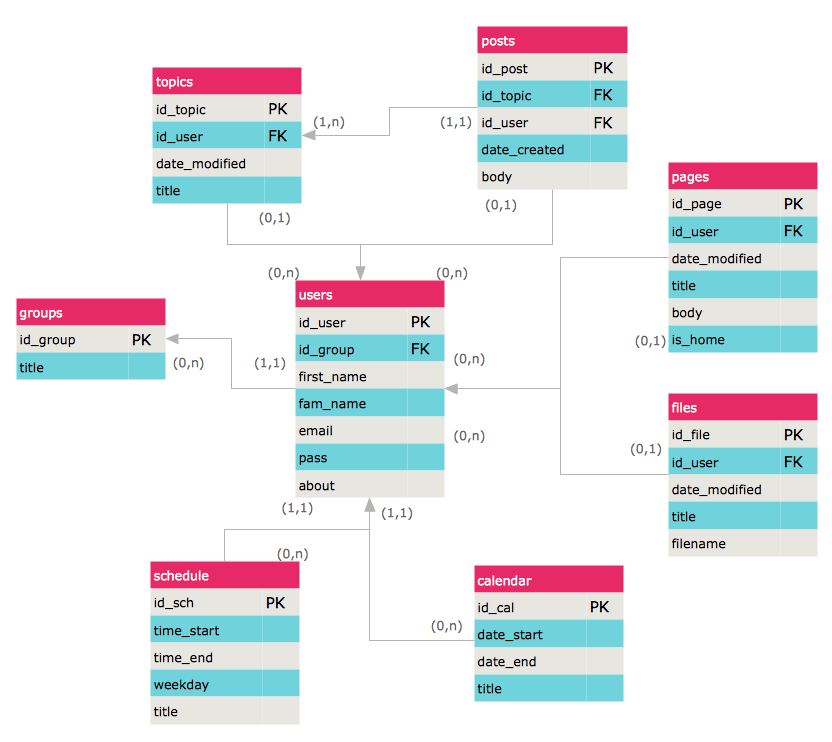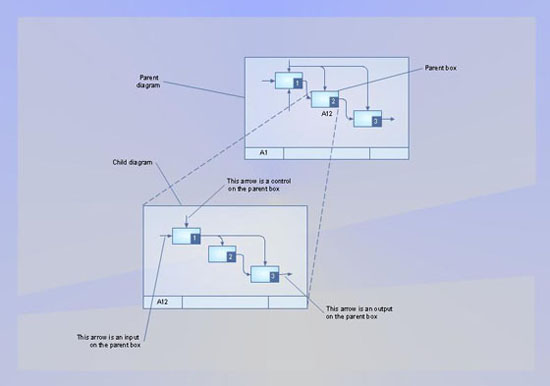HelpDesk
How to Create an ERD Diagram
ERD (entity relationship diagram) is used to show the logical structure of databases. It represents the interrelationships between components of database (entities). Entity relationship diagrams are a widely used in software engineering. Using ERD software engineers can control the every aspect of database development. ER diagram can be used as guide for testing and communicating before the release of software product. ERD displays data as entities that are connected with connections that show the relationships between entities. There is some ERD notations used by data bases developers for representing the relationships between the data objects. ConceptDraw PRO and its ERD solution allow you to build ERD diagram of any notation.
 Entity-Relationship Diagram (ERD)
Entity-Relationship Diagram (ERD)
An Entity-Relationship Diagram (ERD) is a visual presentation of entities and relationships. That type of diagrams is often used in the semi-structured or unstructured data in databases and information systems. At first glance ERD is similar to a flowch
 Azure Architecture
Azure Architecture
Azure Architecture solution bundles into one handy tool everything you need to create effective Azure Architecture diagrams. It adds the extra value to versatile ConceptDraw PRO software and extends the users capabilities with comprehensive collection of Microsoft Azure themed graphics, logos, preset templates, wide array of predesigned vector symbols that covers the subjects such as Azure management, Azure storage, and Azure services, amongst others, and allow you to illustrate Azure Architecture diagrams at any degree of complexity, to present visually your Azure cloud system architecture with professional style, to design Azure cloud topology, to document Windows Azure Architecture and Azure Cloud System Architecture, to visualize the great abilities and work of Microsoft Azure Cloud System and Azure services.
IDEF9 Standard
Use Case Diagrams technology. An effective management of changes is significantly facilitated by way of definition and documenting of business-requirements.- Cloud Storage Er Diagram
- Simple Er Diagram Of Cloud Data Storage
- ER Diagram for Cloud Computing | Amazon Cloud | Cloud ...
- Cloud Computing Architecture Diagrams | ER Diagram for Cloud ...
- ER Diagram for Cloud Computing | Entity-Relationship Diagram ...
- Cloud clipart - Vector stencils library | Entity-Relationship Diagram ...
- How to Build Cloud Computing Diagram Principal Cloud ...
- ER Diagram for Cloud Computing | Amazon Web Services | Entity ...
- ERD Symbols and Meanings | Cloud clipart - Vector stencils library ...
- Entity Relationship Diagram - ERD - Software for Design Crows Foot ...
- ER Diagram for Cloud Computing | Amazon Web Services | How To ...
- Dfd For Cloud Storage
- Entity-Relationship Diagram ( ERD ) | Identifying Quality Management ...
- Workitems workflow diagram | Network Topologies | ER Diagram for ...
- Cross-Functional Flowchart | Entity Relationship Diagram Symbols ...
- App icons - Vector stencils library | Entity-Relationship Diagram ...
- Make Flowchart Cloud Storage Android
- Business Process Diagrams | Entity-Relationship Diagram ( ERD ...
- Cloud Computing Architecture Diagrams | Cloud Computing ...

